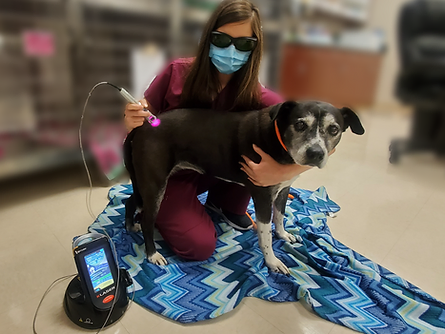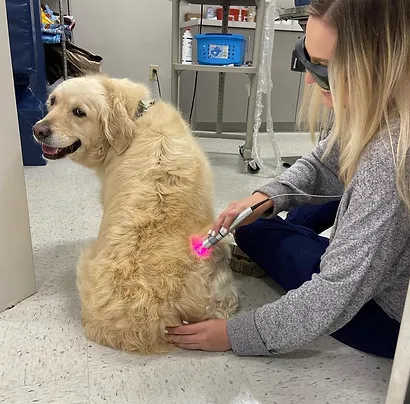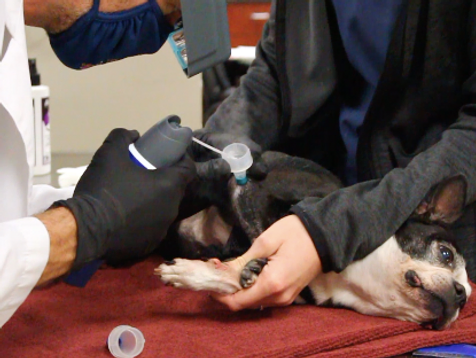Temperature Therapy
Temperature therapy involves the use of heat or cold to reduce pain. Heat therapy relaxes stiff joints and muscles, whereas cold therapy numbs acute pain and reduces inflammation and is even used for minor cosmetic mass removals.

Laser Therapy
Therapeutic lasers, such as our K-Laser unit, have become indispensable tools with various applications in human and veterinary medical fields. Laser therapy is a drug-free, non-invasive option to reduce pain and inflammation and increase the speed of the healing process. Therapeutic lasers use specific wavelengths of light to penetrate the tissues of treated areas. These beams of light increase blood circulation to the affected area, drawing water, oxygen, and nutrients to the damaged tissues. This creates an optimal healing environment that reduces inflammation, swelling, muscle spasms, stiffness, and pain. Laser therapy also accelerates wound healing and decreases the formation of scar tissue. Therapeutic lasers can be used to treat damaged skin and soft tissue, as well as musculoskeletal conditions such as arthritis, torn ACLs, and ruptured intra-vertebral discs.
Client Testimonial
“Our golden retriever, Sunshine, has truly benefited from her laser treatments! Unfortunately, Sunshine was born with dysplasia in her right hip, so we decided to wait as long as possible before opting to do surgery. Because of the excellent care provided by the Kelsey Canine staff, we’ve been successful in keeping Sunshine pain-free for almost 9 years now (with no surgery)! Coupled with Ichon injections, these treatments have allowed our pup to live a healthy, active, and full life.”

Cryotherapy
Cryotherapy, the use of a cryogenic (freezing) agent, has been utilized by doctors, dermatologists, podiatrists, and veterinarians for many years to remove benign skin growths (e.g., skin tags, warts). Cryotherapy works by applying a freezing agent directly to the tissue to be removed. To help avoid discomfort, a local anesthetic will be given prior to freezing. The cryogenic agent freezes the water content in the tissue’s cells and disrupts the cell membranes. As the tissue thaws, the blood supply to the treated area is also disrupted. These effects work together to essentially “kill” the treated tissue.

